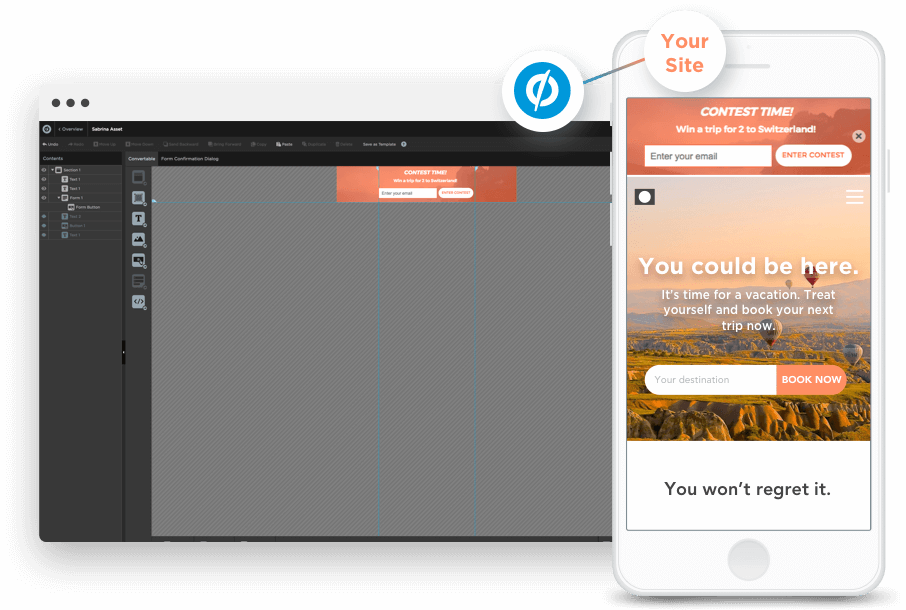Growth hacking. These two words are about to get extremely important as we enter 2023 as economies contract, spending slows down, and the business landscape turns direly competitive.
eCommerce is no exception despite the high surge in online shopping after Covid-19 and optimistic projections.
Retail eCommerce is forecasted to grow to $6.169 trillion, roughly 22.3% of total retail sales, a significant rise from $3.351 trillion to 13.8% in 2019.

However, online retail behemoth Jeff Bezos advised people: ‘Don’t buy a car or refrigerator this holiday season’ citing the recession, reflecting the turbulence we are about to witness.
To help our retail eCommerce readers stay afloat and thrive in a recession, the experts at i95Dev have curated a list of 13 low-effort-high-performance growth hacks.
Let’s begin:
1. Optimize your primary navigation menu for conversions

As rare as it may sound, not every retail eCommerce stores have an optimized top navigation bar.
This limits the chances of conversion as navigation menus are high-visibility assets with transactional intent, and doing them wrong can sabotage your conversions to a great extent.
Make sure to include a well-optimized navigation menu that helps filter products logically and has special offers like the above example.
2. Integrate customer feedback with your storefront

We recommend using UGC (User Generated Content) testimonials to increase your conversion rate.
It would be best if you integrate your customer feedback tool with your storefront to automate the delivery of testimonials on your website with adequate filtering mechanisms. A modern integrated eCommerce solution might come in handy for executing the integration flawlessly.
You may also want to read: Benefits of a modern integrated eCommerce solution
3. Downsell smartly
As the recession continues to cause financial stress for people, it is in your best interest to accommodate the new economic realities at your retail store.
Focus on down-selling while ensuring that the customer suffers the least on quality and that no compromises are made in your service (delivery, returns.)
Infuse down selling in your marketing emails and specifically state that you offer more affordable products with similar quality to retain as many customers as possible.
4. Offer maximum payment options
One of the most common reasons people abandon a purchase they are serious about is their inability to use their preferred payment option.
You can least eliminate this inconvenience by offering full payment options according to your target audience.
Also, ensure that returns processing supports all of them since getting a refund without hassle is also a priority for customers when trying new products.
5. Leverage social commerce
Social commerce will be more relevant than ever as people will try to reduce time spent on eCommerce websites amid financial instability.
Thus, invest in social commerce and optimize your backend to drive sales and service for orders placed on social commerce channels
i95Dev has witnessed a surge in demand for modern eCommerce solutions as retailers are going forward with full-scale automation for social selling.
Are you considering investing in Social Commerce? Get expert tips and proven strategies in our on-demand webinar.
6. Simplify returns
A staggering 72% of customers say a hassle-free return experience makes them more likely to shop again with an eCommerce brand.
While you put active efforts into simplifying your returns processing and your return policy as it is equally important to communicate the benefits of the simple return process and policy.
7. Publish ‘how-to guides for your top-selling products
Not knowing how to use a product is one of the significant reasons behind trying a new product or returning it.
Having an educational resource at your disposal can reduce your return rate to a considerable extent, as well as help prospects make the purchase decision.
Prefer visual guides or videos, as long-form blogs may not be the most consumer-friendly option
8. Add progress bars on your checkout page
It is in your best interest to eliminate any complexity in your checkout page and keep only a bare minimum of fields.
At the same time, your checkout page should have a progress bar to help the buyer stay focused on completing the purchase.
It becomes easier to complete the entire process with insight into how much data the user needs to input.
9. Stick with sticky CTA bars


Whether it is a web or mobile app, sticky bars are a great way to increase the conversion rate as they provide a stable piece of real estate for quick conversion.
This way, you can reduce the number of steps for purchase and make it easy for the user to checkout as quickly as possible once they decide to make a purchase.
10. Integrate user activity tracker with your MarTech solutions
If you haven’t integrated a user activity tracking tool with your storefront end, it is high time you do so.
A user activity tagging tool like Hotjar, Elevar, or Tagmate can help you understand user behaviour and issues with your eCommerce site and eliminate any bottleneck.
Also, it provides you with the data for retargeting purposes; a time-tested paid marketing strategy that performs better than Google ads.
11. Add user ratings to Google Ads

Social proof is one of the best sales drivers, and many retail eCommerce players do not use star ratings on their Google Ads.
It is noteworthy that the ratings have a similar effect on Google listings and that Google supports them, but most online retailers aren’t even aware of the same.
12. UGC: Reviews, statistics, and pictures
As discussed earlier, user-generated content (UGC) can be a game changer, but you must structure UGC properly on your eCommerce website.

Make sure that the reviews are statistically presented and can be filtered easily while allowing customers to upload images.
This way, you can benefit from the UGC while making your customers feel ‘heard’ and appreciated.
13. Add a chatbot

Conversational commerce enabled by chatbots is a tremendous value addition to the user experience and the overall eCommerce website/mobile app due to its multi-utility nature.
They can help the user get additional information about a product and company policies, find resources, raise complaints, and complete transactions like getting delivery updates.
Also, chatbots can help with the checkout process, making them one of the most powerful tools to drive sales and manage the customer experience in a user-friendly manner.
Wrap Up
We have specifically included the growth hacks that can be implemented within a short time frame, as the impact of the recession has already caused tremendous damage to customer sentiment.
These hacks will help you strengthen your bottom line and make valuable progress in terms of customer experience.
Want to know more about retail eCommerce growth hacks for 2023?
Boost your retail eCommerce in 2023 and beyond with these growth hacks! Want to learn further? Join our webinar!




